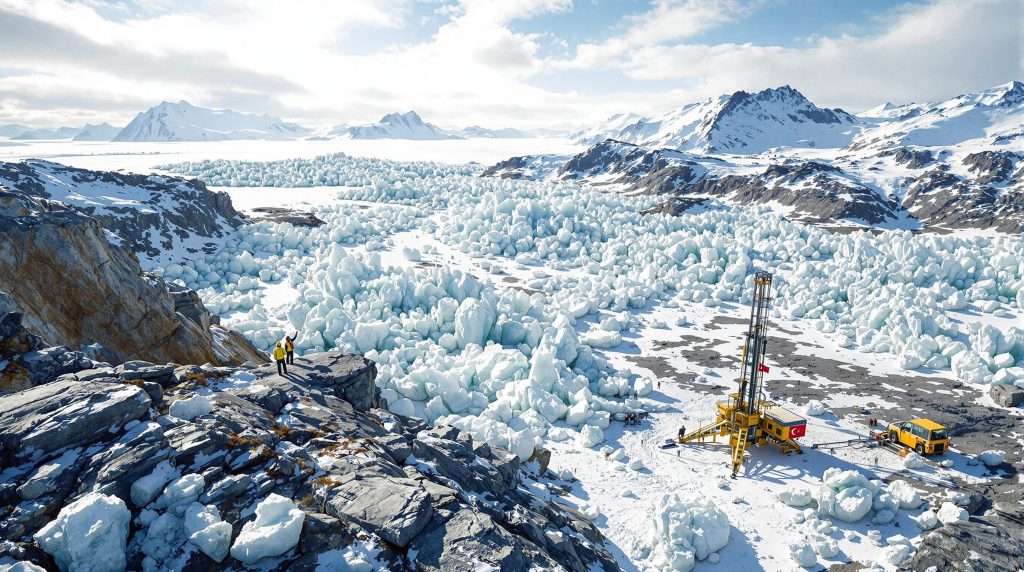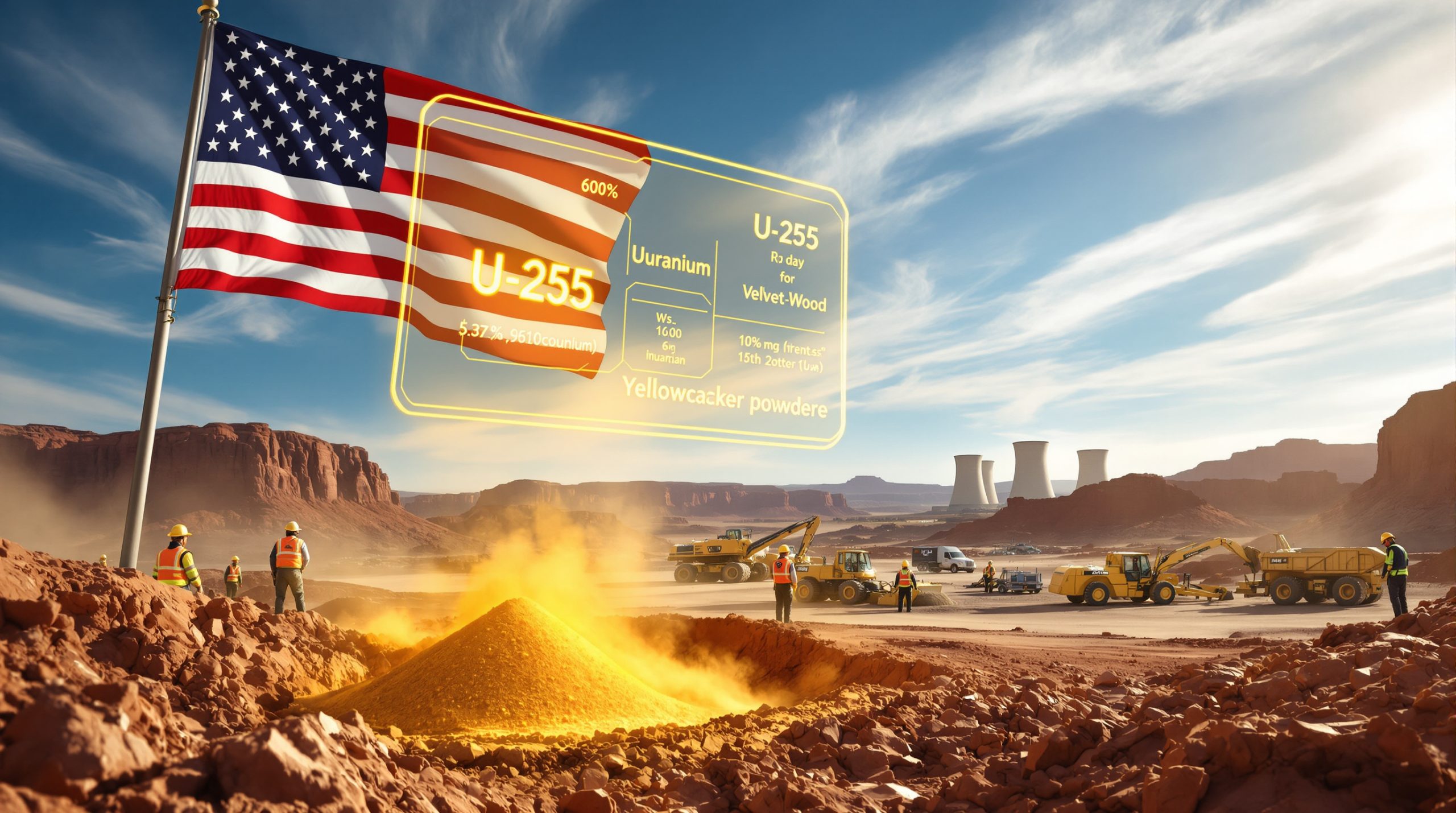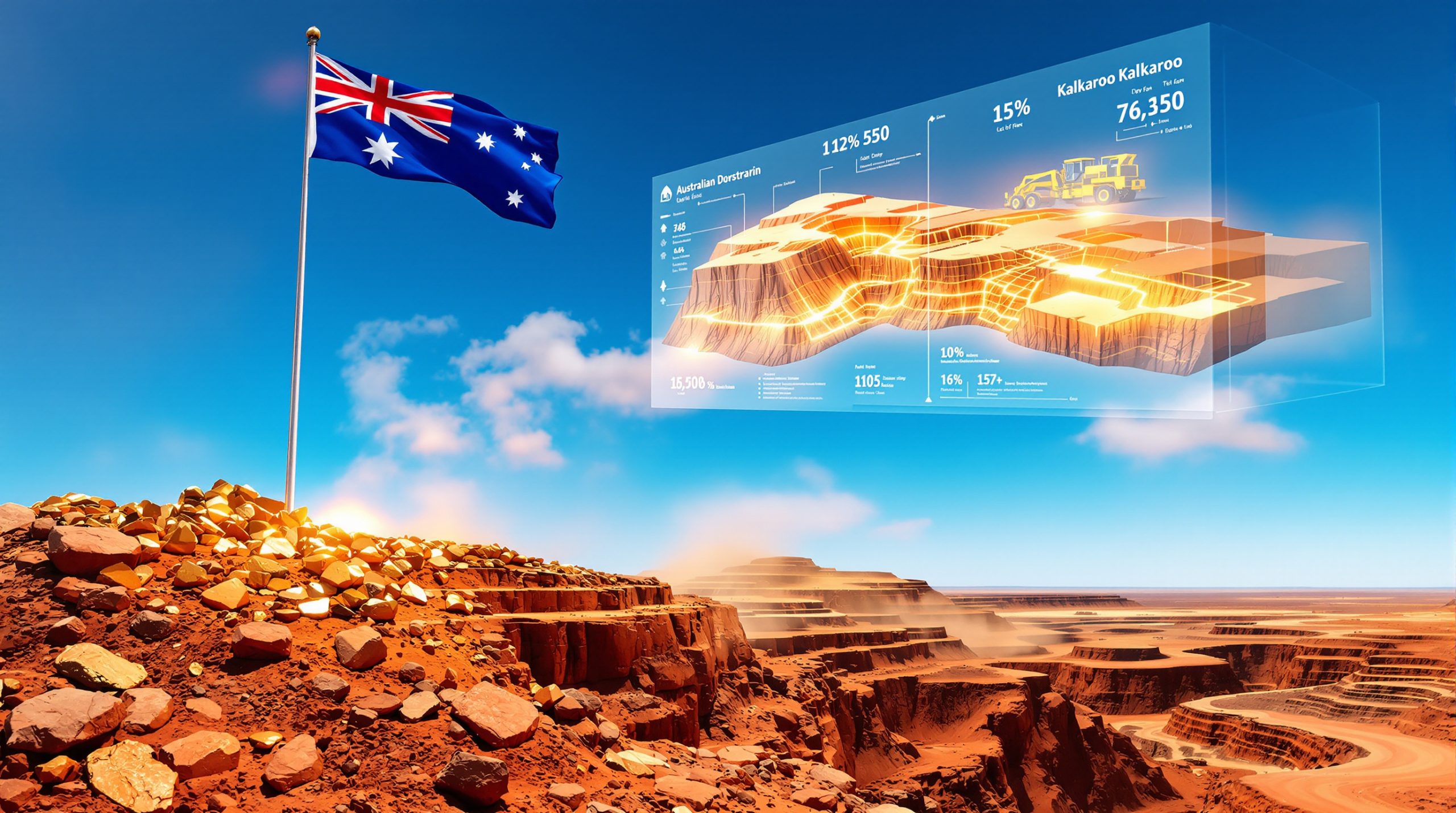Discovering Greenland's Lithium Frontier: Brunswick Exploration's Ivisaartoq Find
The critical minerals landscape is witnessing a significant development with Brunswick Exploration's recent discovery in Greenland. The company has identified what experts are calling Greenland's largest spodumene pegmatite trend, potentially positioning the Arctic nation as an emerging player in the global lithium market.
What Is the Ivisaartoq Lithium Pegmatite Field?
The Ivisaartoq lithium pegmatite field represents a substantial new discovery within Greenland's mineral landscape. Initially identified last year on Brunswick Exploration's Nuuk license, this field has rapidly emerged as Greenland's largest known spodumene pegmatite trend.
Spanning approximately 2 kilometers in length, the Ivisaartoq field sits within Greenland's southwest region. What makes this discovery particularly noteworthy is not just its size but its potential expansion opportunities, as recent field investigations suggest the trend remains open in all directions.
Geologically, the field forms part of the larger South Ivisaartoq belt, which stretches approximately 20 kilometers in strike length. This extensive belt presents significant exploration potential beyond the initial discovery area.
The strategic importance of this discovery cannot be overstated in the context of global lithium supply. As electric vehicle production accelerates worldwide, new sources of battery-grade lithium outside traditional producing regions have become increasingly valuable. Greenland's emergence as a potential lithium supplier could diversify global supply chains currently dominated by Australia, Chile, and China.
Geological Context: Pegmatites are extremely coarse-grained igneous rocks that often contain rare minerals and elements, including lithium. Spodumene is a lithium aluminum inosilicate mineral and a primary source of lithium for commercial use.
How Significant Is Brunswick's Recent Discovery?
Brunswick's discovery has evolved from an initial find to a substantial lithium project with impressive dimensions. The company has confirmed a corridor measuring approximately 2000 meters long by 300 meters wide, containing at least eight pegmatite outcrops.
Key metrics of the discovery include:
- Minimum of eight identified pegmatite outcrops
- Surface expressions ranging from 5 to 400 meters in length
- Width variations from 2 to 40 meters
- High-grade potential with spodumene concentrations reaching up to 50% in some samples
Perhaps most significantly, these identified outcrops sit within a larger geochemically anomalous envelope measuring roughly 3 kilometers by 1.5 kilometers. This suggests the potential for additional discoveries beyond what has already been mapped.
"The discovery of this 2 km by 300 m area of spodumene bearing dykes is a testament to BRW's systematic and efficient approach," noted Killian Charles, Brunswick Exploration's President and CEO, highlighting the methodical exploration work that led to the find.
For Greenland's mining sector, this discovery could be transformative. The country has historically focused on base metals and rare earth elements, with limited lithium industry innovations. The Ivisaartoq discovery potentially establishes a new mineral commodity for Greenland's resource portfolio and could attract additional exploration investment to the region.
What Are the Technical Characteristics of the Pegmatite Field?
The mineralogical composition of the Ivisaartoq pegmatite field reveals several features that make it particularly noteworthy for lithium explorers.
Spodumene Concentration and Distribution
Spodumene, the primary lithium-bearing mineral within the field, shows significant variability across the discovered outcrops:
- Concentration levels vary from sparse to exceptionally high-grade zones reaching up to 50%
- Crystal sizes range from 1 to 40 centimeters, indicating multiple crystallization phases
- Two main crystal varieties have been identified: white and pale green
The presence of exceptionally large crystals (up to 40 cm) suggests favorable crystallization conditions during formation and potentially easier mineral processing characteristics compared to fine-grained deposits.
Secondary Lithium Minerals
Beyond spodumene, the field contains several secondary lithium-bearing minerals that add to its overall resource potential:
- Holmquistite (lithium-bearing amphibole) observed in host rocks surrounding the pegmatites
- Elbaite (lithium-rich tourmaline) present within the pegmatite bodies
- Lepidolite (lithium mica) occurrences throughout the field
These secondary minerals not only provide additional lithium sources but also offer important geological indicators about the pegmatite's formation and evolution.
The physical dimensions of the outcrops vary considerably across the field. Surface expressions range from smaller 5-meter exposures to substantial 400-meter-long outcrops, with widths varying from 2 to 40 meters. This variability is typical of pegmatite systems, which often exhibit complex intrusion patterns and variable thickness.
Technical Note: The presence of multiple lithium-bearing minerals (spodumene, holmquistite, elbaite, and lepidolite) suggests a well-evolved lithium-cesium-tantalum (LCT) pegmatite system, which is the most economically significant pegmatite type for lithium production.
How Was the Discovery Made?
Brunswick Exploration's success at Ivisaartoq reflects a methodical approach to lithium exploration in a relatively unexplored region. The company employed a systematic exploration program that built upon initial discoveries to define the broader pegmatite field.
The exploration methodology likely combined traditional field techniques with modern analytical tools. Initial field mapping established the presence of pegmatite outcrops, followed by systematic sampling to define the extent and grade of lithium mineralization.
Technical confirmation of lithium content utilized both portable X-ray fluorescence (pXRF) and Laser-Induced Breakdown Spectroscopy (LIBS) units. These field-portable analytical tools allowed the exploration team to rapidly assess lithium content without waiting for laboratory results, enabling real-time decision-making during field campaigns.
The discovery represents a collaborative effort involving multiple organizations. As acknowledged by Killian Charles: "I would like to personally thank the BRW team, Xploration Services Greenland A/S, the Geological Survey of Denmark and Greenland, and the Greenland Mineral Resource Authority for their dedication and support."
This collaborative approach leveraged local expertise from Xploration Services Greenland A/S, scientific support from the Geological Survey of Denmark and Greenland, and regulatory guidance from the Greenland Mineral Resource Authority—demonstrating the importance of partnerships in successful mineral exploration.
What Is the Exploration Potential of the Ivisaartoq Area?
The current known extent of the Ivisaartoq lithium pegmatite field likely represents only a fraction of its total potential. With the main trend already established at approximately 2 kilometers in length, several factors suggest significant expansion opportunities.
First, Brunswick has noted that the pegmatite trend "remains open in all directions," indicating that the boundaries of the mineralized system have not yet been defined. This openness is particularly significant given the field sits within a larger geochemically anomalous envelope measuring roughly 3 kilometers by 1.5 kilometers.
The broader South Ivisaartoq belt, measuring approximately 20 kilometers in strike length, presents a regional-scale exploration opportunity. Similar geological conditions likely extend throughout this belt, suggesting potential for additional pegmatite discoveries beyond the initial field.
Depth potential remains entirely untested at this early exploration stage. Pegmatite systems often extend to considerable depths, sometimes showing improved grades and thicknesses below surface expressions. Only drilling will reveal the vertical extent of the system.
Several geological indicators suggest favorable conditions for additional discoveries:
- The presence of multiple lithium mineral species (spodumene, holmquistite, elbaite, lepidolite)
- Variety in pegmatite textures and compositions
- Large anomalous geochemical footprint extending beyond known outcrops
- Regional-scale structural controls likely influencing pegmatite emplacement
What Are Brunswick's Next Steps?
With this significant discovery in hand, Brunswick Exploration has outlined several next steps to advance the Ivisaartoq project.
The company is actively planning "an inaugural drill campaign for Ivisaartoq to test the newly discovered outcrops," according to the Global Mining Review report. This drilling will provide crucial information about the three-dimensional geometry of the pegmatites, their depth continuity, and subsurface lithium grades.
Brunswick is "currently designing and evaluating the opportune time to begin a comprehensive drill campaign at Ivisaartoq." The timing considerations likely involve logistical planning around Greenland's seasonal access constraints, equipment mobilization, and permitting requirements.
On the analytical front, collected samples are "being sent for analysis to ALS in Dublin, Ireland" for comprehensive geochemical characterization. This laboratory analysis will provide definitive lithium grades and identify other potentially valuable elements often associated with lithium pegmatites, such as tantalum, cesium, and rubidium.
Additionally, "thin section samples will be prepared and examined for mineralogical understanding," providing detailed insights into the pegmatite's mineral composition, texture, and potential processing characteristics. This microscopic analysis helps geologists understand the crystallization history and economic potential of the deposit.
Future exploration will likely expand beyond the current discovery area to test additional targets within the license area, particularly along the 20-kilometer South Ivisaartoq belt.
How Does This Discovery Impact Greenland's Mining Industry?
Greenland's mining industry stands at a pivotal moment, with the Ivisaartoq lithium discovery potentially accelerating its development trajectory. The country has historically seen limited mining activity despite abundant mineral resources, partly due to its remote location, harsh climate, and infrastructure challenges.
The regulatory environment for lithium development in Greenland has evolved in recent years. The Greenlandic government has expressed interest in developing its mineral resources to diversify the economy beyond fishing and subsidies from Denmark. However, any development must navigate environmental regulations designed to protect Greenland's pristine wilderness.
Infrastructure represents both a challenge and opportunity. The Ivisaartoq area, while remote, is located in southwest Greenland, which has better infrastructure than many other parts of the country. Nevertheless, developing a lithium operation would require significant investment in transportation, energy, and processing facilities.
Community engagement will be essential for project success. Local Inuit communities have increasing influence over resource development decisions in Greenland, and their support will be crucial for any future mining operation. Projects that can demonstrate tangible benefits for local communities through employment, training, and business opportunities are more likely to gain approval.
The economic potential for Greenland is substantial. A successful lithium operation could generate export revenue, employment opportunities, tax income, and knowledge transfer to the local workforce. As a nation seeking greater economic independence, the development of critical mineral resources like lithium aligns with Greenland's strategic interests.
What Is the Global Context for This Lithium Discovery?
The Ivisaartoq discovery comes at a time of rapidly evolving global lithium markets. Demand for lithium has surged with the growth of electric vehicle production and energy storage systems, while supply expansion has struggled to keep pace, creating periodic market tightness.
Greenland's emergence as a potential lithium producer would add geographic diversity to global supply, currently dominated by Australia (hard rock mining) and South America's "Lithium Triangle" of Chile, Argentina, and Bolivia (lithium brine insights). This diversification is increasingly valued by battery manufacturers and automakers seeking to reduce supply chain vulnerabilities.
Compared to other emerging lithium provinces, Greenland offers certain advantages, including:
- Political stability within the Danish realm
- Established mining laws and regulations
- Proximity to European markets
- Potential for clean hydropower energy
However, challenges include:
- Harsh Arctic conditions limiting operational seasons
- Higher operating costs compared to established lithium regions
- Limited local skilled workforce
- Transportation logistics
For the battery supply chain, new sources of lithium are essential to meet projected demand growth. Major automakers and battery manufacturers have increasingly sought to secure upstream lithium supplies through investments and offtake agreements, creating potential partnership opportunities for projects like Ivisaartoq.
The geopolitical dimensions of Arctic resource development add another layer of complexity. As climate change increases accessibility to Arctic resources, various nations have shown increasing interest in Greenland's mineral potential. The strategic importance of lithium as a battery metal further heightens international interest in significant new discoveries.
Who Is Brunswick Exploration?
Brunswick Exploration Inc. (BRW) has established itself as an exploration company focused on lithium projects across North America and now Greenland. The company's systematic approach to exploration has yielded multiple lithium discoveries across its project portfolio.
Under the leadership of President and CEO Killian Charles, Brunswick has pursued a strategy of identifying and exploring promising lithium pegmatite trends in underexplored regions. Charles has emphasized the company's "systematic and efficient approach" to exploration, which has now yielded results in Greenland.
The Ivisaartoq discovery builds upon Brunswick's experience in lithium exploration, demonstrating the company's ability to apply its exploration methodology in new geographical settings. This track record may prove valuable as the company advances the Greenland project.
While Brunswick's market position and capitalization details weren't provided in the source materials, the Ivisaartoq discovery represents a potentially transformative development for the company. Significant lithium discoveries often catalyze substantial valuation changes for exploration companies, particularly in the current environment of strong lithium demand.
FAQs About Greenland's Lithium Potential
How does climate change affect lithium exploration in Greenland?
Climate change is creating a dual impact on Greenland's mineral exploration. Warming temperatures are extending the operational season and reducing ice cover, exposing previously inaccessible areas for exploration. However, this same warming creates environmental concerns, with increased attention on the sustainability of mining activities in this sensitive region.
What are the logistical challenges of mining in Greenland?
Developing a lithium mine in Greenland faces several logistical hurdles:
- Limited transportation infrastructure requiring significant investment
- Harsh winter conditions restricting operational periods
- Workforce recruitment and housing in remote locations
- Energy supply for processing facilities
- Shipping and export logistics for concentrate or refined products
How does Greenland's lithium quality compare to established producers?
Based on initial reports of up to 50% spodumene in some samples and crystal sizes reaching 40 centimeters, the Ivisaartoq pegmatites appear to be high-quality. However, comprehensive analysis of lithium content, impurity levels, and processing characteristics will be necessary to make definitive comparisons with established operations in Australia, Canada, and other regions.
What is the timeline from discovery to potential production?
Lithium projects typically follow a multi-year development path:
- Initial exploration and discovery (completed)
- Resource definition drilling (1-2 years)
- Preliminary economic assessment (6-12 months)
- Prefeasibility and feasibility studies (1-2 years)
- Permitting and environmental approvals (1-3 years, depending on jurisdiction)
- Construction (1-2 years)
This suggests a potential timeline of 5-10 years from discovery to production, though this can vary significantly based on project specifics, market conditions, and regulatory processes.
How might this discovery affect global lithium prices?
While significant, the Ivisaartoq discovery is unlikely to impact lithium prices in the near term given the early stage of exploration. However, as the project advances toward potential development, it would contribute to the pipeline of future lithium supply projects that collectively influence market sentiment and price forecasts.
Key Metrics of the Ivisaartoq Lithium Pegmatite Field
| Feature | Measurement | Significance |
|---|---|---|
| Total trend length | ~2 kilometers | Indicates major pegmatite system |
| Corridor width | ~300 meters | Suggests substantial volume potential |
| Number of identified outcrops | Minimum of 8 | Multiple exploitation opportunities |
| Anomalous envelope dimensions | 3 km × 1.5 km | Extensive exploration target area |
| South Ivisaartoq belt length | ~20 kilometers | Regional-scale opportunity |
| Maximum spodumene concentration | Up to 50% | High-grade potential |
| Crystal size range | 1-40 centimeters | Varies from fine to very coarse |
| Largest outcrop dimensions | 400 m × 40 m | Substantial surface expression |
The Future of Greenland's Lithium Resources
The Brunswick Exploration discovery at Ivisaartoq represents just the beginning of what could become a significant new lithium province. As exploration activities intensify across Greenland, additional discoveries may follow, potentially establishing the island as an important contributor to global lithium supply.
For investors and industry observers, the Ivisaartoq project bears watching as it progresses through exploration, resource definition, and economic studies. The project's advancement will provide insights not only into Greenland's lithium potential but also into the broader challenges and opportunities of developing critical mineral resources in Arctic regions.
Environmental considerations will remain paramount throughout this process. Greenland's government and citizens have emphasized sustainable development principles for resource projects, seeking to balance economic opportunities with environmental protection. How Brunswick navigates these considerations will likely influence the broader perception of mining in Greenland.
With the growing demand for lithium driven by electrification, new extraction methods like geothermal lithium extraction are being developed alongside traditional mining. However, the scale of the Greenland lithium peg
Want to Be Alerted to the Next Major Mineral Discovery?
Don't miss out on the next market-moving find like Brunswick's Greenland lithium discovery. Discovery Alert's proprietary Discovery IQ model delivers real-time notifications of significant ASX mineral discoveries, providing actionable insights for both short-term traders and long-term investors. Visit our discoveries page to understand how major mineral finds can generate substantial returns.




